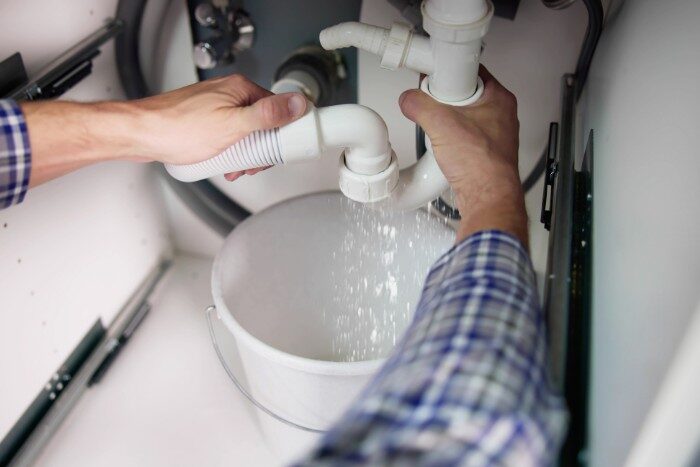
Rainwater Harvesting System: How Tech Enthusiasts Can Transform Sustainability
Share
In an era where sustainability is not just an option but a necessity, the rainwater harvesting system stands out as a pivotal innovation. As tech professionals and enthusiasts, understanding the intricacies of this system can be both enlightening and impactful. The ability to integrate technology into environmental conservation efforts is not only fascinating but essential for our future. This article will delve into the components, benefits, and technological advancements of rainwater harvesting systems, offering insights for those eager to contribute to a greener planet.
Rainwater harvesting involves collecting and storing rainwater for later use, reducing dependency on municipal water supplies. It's a practice that dates back centuries but has gained renewed interest in the face of water scarcity and climate change. By implementing smart technologies, we can optimize these systems for efficiency and sustainability.

The Components of a Rainwater Harvesting System
A typical rainwater harvesting system comprises several components, each playing a critical role in the collection and utilization of rainwater. Heres a closer look at these components:
1. Catchment Area
The catchment area, usually the roof, is where rainwater is first collected. The choice of materials for this area can significantly affect the quality and quantity of water collected. Tech professionals can explore materials that enhance water flow and minimize contamination, such as advanced roofing membranes.
2. Conveyance System
This system includes gutters and pipes that transport water from the catchment area to storage tanks. Innovations in this area can significantly reduce water loss and contamination. For instance, IoT-enabled sensors can monitor and manage water flow, alerting users to potential blockages or leaks.
3. Storage Tanks
Storage tanks are where the collected rainwater is stored for future use. The integration of smart technology can optimize storage solutions, ensuring water remains clean and usable. Sensors that monitor water levels and quality can provide real-time data, allowing for proactive management.
4. Filtration and Purification
Before rainwater can be used, it must be filtered and purified to remove debris and pathogens. Tech enthusiasts can explore cutting-edge filtration systems that use UV light or advanced membrane technology to ensure water safety.
Benefits of Rainwater Harvesting Systems
The advantages of implementing a rainwater harvesting system are numerous, particularly for tech-savvy individuals looking to make a difference:
Environmental Impact
By reducing reliance on municipal water supplies, rainwater harvesting systems decrease the demand on local water resources, contributing to environmental sustainability. This approach aligns with the broader goals of water conservation, as highlighted in articles such as Environmental Impact of Bathroom Water Use.
Cost Savings
Harvesting rainwater can lead to significant savings on water bills. By utilizing free rainwater for non-potable uses such as irrigation, flushing toilets, and washing cars, households can reduce their water costs. For tech enthusiasts, investing in smart systems that optimize water usage can further enhance these savings, as discussed in Calculating ROI for Water-Saving Toilets.
Resilience and Self-Sufficiency
During periods of drought or water restrictions, a rainwater harvesting system can provide a reliable backup water supply, ensuring self-sufficiency. This resilience is crucial in adapting to the challenges posed by climate change.
Technological Innovations in Rainwater Harvesting
As technology continues to evolve, so too do the possibilities for enhancing rainwater harvesting systems. Here are some innovations that tech enthusiasts can explore:
Smart Sensors and IoT Integration
The integration of IoT devices in rainwater harvesting systems can revolutionize their efficiency. Smart sensors can monitor water levels, flow rates, and quality, providing real-time data to users. This information can be accessed remotely, allowing for convenient management and troubleshooting.
Automated Systems
Automation in rainwater harvesting can optimize water usage by automatically distributing water to where it's needed most. For instance, automated irrigation systems can use weather data to determine the best times to water plants, conserving water and ensuring optimal plant health.
Data Analytics for Optimization
Data analytics can play a crucial role in optimizing rainwater harvesting systems. By analyzing usage patterns and weather data, tech professionals can develop algorithms that predict water availability and optimize storage and usage strategies.
Implementing a Rainwater Harvesting System at Home
For tech enthusiasts eager to implement a rainwater harvesting system at home, there are several steps to consider. Begin by evaluating the feasibility of your project, considering factors such as roof size, rainfall patterns, and water demand. Consulting resources like 7 Ways to Save Water can provide valuable guidance on starting your journey.
Once the basics are in place, explore the latest technologies available on the market. From smart sensors to advanced filtration systems, the options are vast and varied. Consider partnering with companies specializing in sustainable technology to ensure your system is both efficient and environmentally friendly.
Conclusion
The rainwater harvesting system presents a unique opportunity for tech professionals and enthusiasts to contribute to sustainability efforts. By leveraging technology, we can enhance the efficiency and effectiveness of these systems, paving the way for a greener future. As water scarcity becomes an increasingly pressing issue, the role of innovative solutions cannot be overstated. Embrace the challenge, explore the possibilities, and make a lasting impact on our planet.

FAQs
1. What is a rainwater harvesting system?
A rainwater harvesting system collects and stores rainwater for later use, reducing reliance on traditional water sources and promoting sustainability.
2. How can technology improve rainwater harvesting?
Technology can enhance rainwater harvesting systems through smart sensors, IoT integration, and data analytics, optimizing water collection and usage.
3. Are rainwater harvesting systems cost-effective?
Yes, they can lead to significant savings on water bills and provide a reliable backup supply during water shortages, making them a cost-effective solution for many households.
